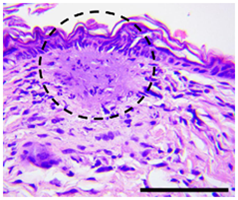
▶ Previous Artlcle: #13-4. Non-ablative Fractional Lasers
To reduce side effects of this procedure and raise its effects, it is effective to use a whitening agent immediately after the procedure so that it penetrates the skin and to induce a quick skin soothing.
Available whitening agents include transamin, niacin, and vitamin C, and PDRN or MGF is also recommended to be penetrated into the skin simultaneously.
[Advertisement] MAGNUM(Q-switched Nd:YAG Laser) – Manufacturer: (www.i-dana.com)]
1064nm Fractional Laser
The 1064nm fractional laser, as well known, uses Nd:YAG as a medium and produces fractional laser beams by using MLA (Micro-Lens Array) hand piece mainly in quasi long-pulsed laser or long-pulsed laser.
At 1064nm, penetration depth is much due to the properties of this wavelength, but beam diameter is small.
Therefore, substantial penetration depth within the tissue is so low that photothermal effects are given predominantly to the epidermis and the upper layer of dermis.
The main purpose is to improve skin tone, fine wrinkles, and skin elasticity as well as extracellular matrix (ECM) for the treatment of melasma.
The 1064nm fractional laser has a very wide range of indications.
The fractional laser beam with a high peak power through MLA is characterized with less pain and greater rejuvenation effects, even if it requires almost no recovery time, than bulk beam.

Figure 4. Microscopic necrotic column by 1927 nm fractional laser (Source: Therapeutic efficacy and safety of a 1927-nm fractionated thulium laser on pattern hair loss: an evaluator-blinded, split-scalp study. Sung Bin Cho, Boncheol Leo Goo, +3 authors. Heesu Kim Published in Lasers in Medical Science. 2018).
-To be continued




















